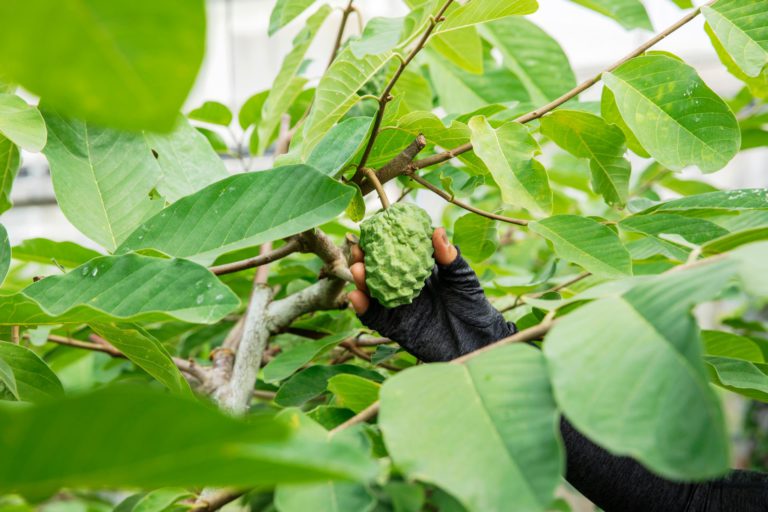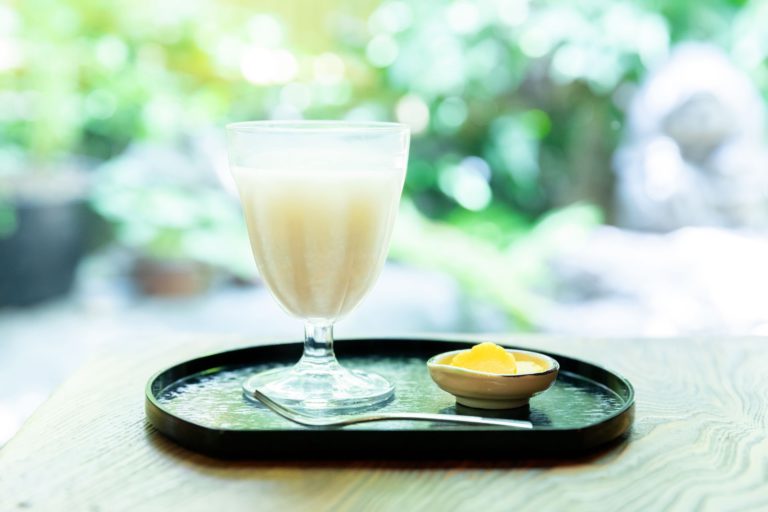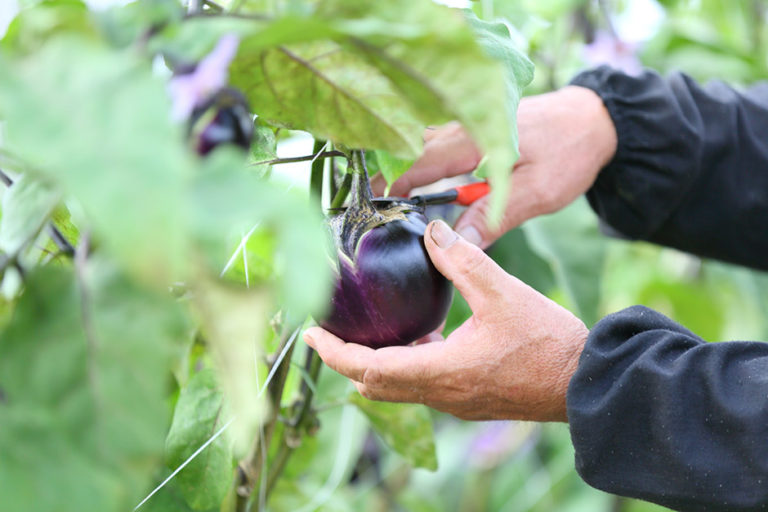A Taste of Winter Snow Crab
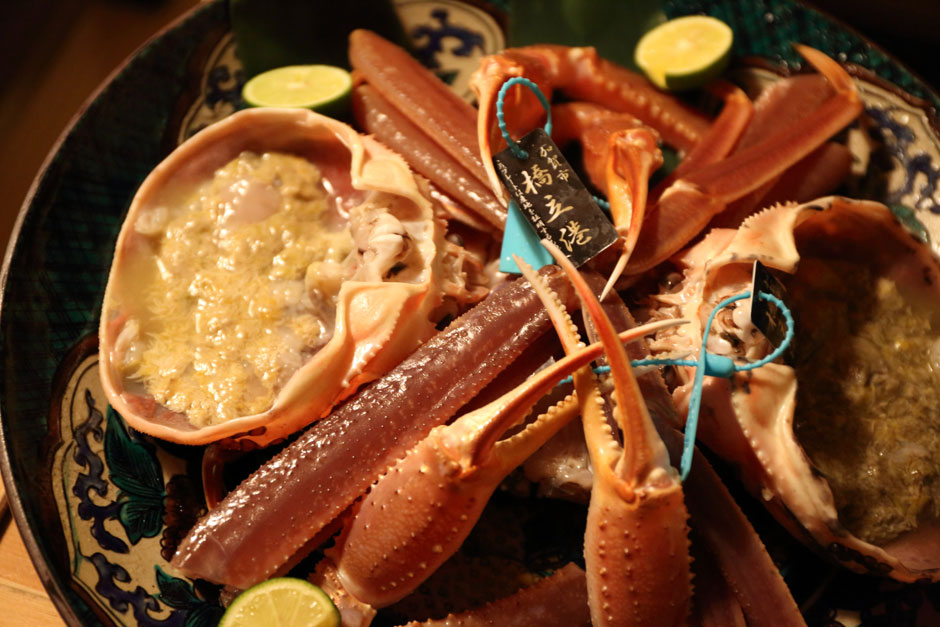
Snow crabs are caught in many areas of Japan, and each area has established its own unique brand for them. While crab is expensive, it is widely loved in Japan. In this article, we focus on one of Japan’s most famous snow crab production sites: Hashidate Fishing Port in Kaga City, Ishikawa Prefecture. To help preserve its falling snow crab population, the fishing season there is limited. Every November 6, the snow crab fishing season begins, bringing connoisseurs from around the nation to Hashidate to enjoy the flavor of the season. We too headed to Hashidate Fishing Port looking for delicious snow crab.
The Secret behind Delicious Snow Crab, Hashidate Fishing Port's Major Winter Product
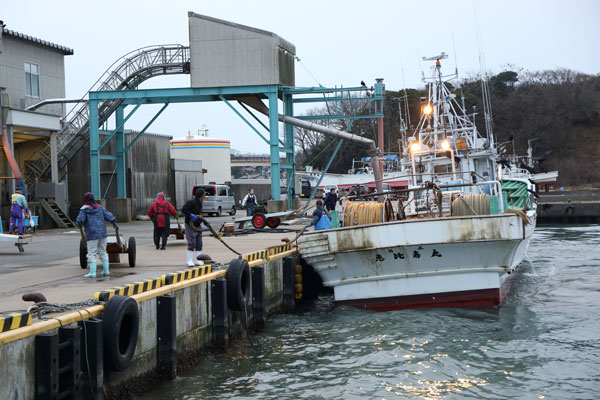
Located near fishing grounds, Hashidate Fishing Port is one of Japan’s leading ports, known for its large quantities of fresh fish. When fishing boats arrive at the port at around 4 pm, the fish are sorted by species and then auctioned. The short time between the landing and auctioning of the fish is the secret behind the freshness of Hashidate seafood.
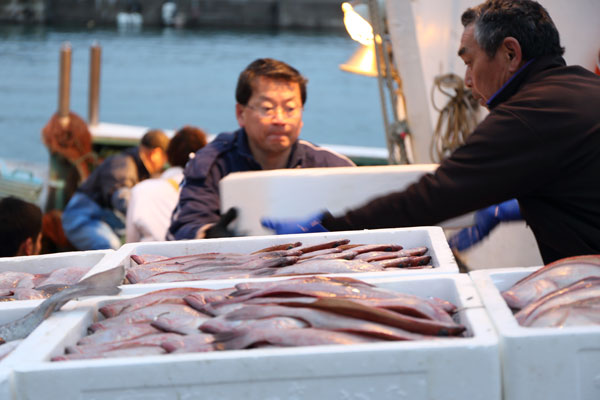
Snow crab is a major product at Hashidate Fishing Port, and it is displayed together with many different kinds of fish. Sold in lively auctions, the port’s snow crabs are sent to restaurants, inns, and fish sellers while still fresh.

Hashidate crab beds are made up of a mixture of sand and mud, which is perfect for breeding delicious crabs. Normally, snow crabs hide in mud on the ocean floor, and this mud tends to accumulate in their shells. However, snow crabs caught in the Hashidate fishing grounds live in a sand-mud mixture, which is less likely to accumulate in their shells. The area also provides abundant food sources for the crabs to feed and grow on, ensuring that the crabs have a delicious fatty meat compared to those from other fishing grounds.
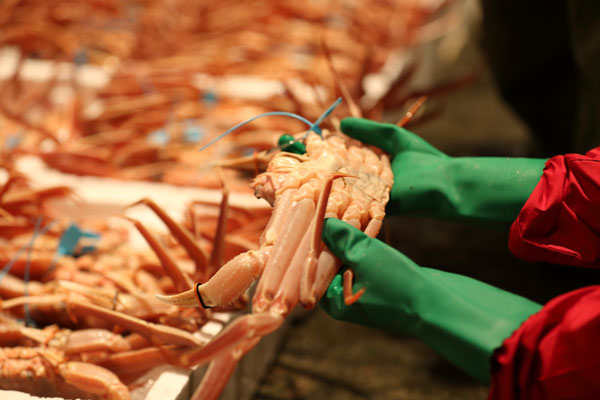
In Hashidate, female snow crabs?commonly known as kobako?are also caught. To ensure conservation of the species, though, females can only be caught for a short period of time (from November to the end of the year), and they are rarely found in markets outside the prefecture. Kobako crab is famous for captivating the hearts of those who eat it, because of the delicious eggs and miso-like paste found inside the shell during spawning season.
Crab is sorted according to established standards, using sky blue tags labeled Hashidate.
This label signifies high-quality snow crab bred in rich fishing grounds, a brand value widely recognized in the market.
Maruya Suisan’s Makoto Yuya Tells Us How to Select Delicious Snow Crab

We visited Makoto Yuya of Maruya Suisan, a fish wholesaler located near Hashidate Fishing Port, to learn more about the appeal of snow crab.
Maruya Suisan is a wholesaler, retailer, and seafood processor, as well as the manager of a restaurant called Shintoku that serves fresh fish dishes. The company also owns a fishing boat called the Hoshomaru. Working for Maruya Suisan, Yuya has become a true seafood connoisseur with a deep knowledge of the fisheries industry in Hashidate. While he showed us around, we asked him what to look for in snow crab.
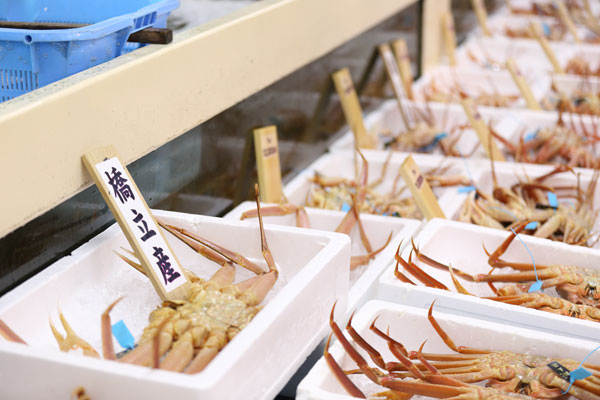
What to look for in snow crab
![]() Look on the underside, not the red shell side
Look on the underside, not the red shell side
“The amount of meat a crab has can be judged by looking at its underside. The shell on the underside is colorless and translucent. If the crab has a lot of meat, it will look whitish. If not, it will look blackish. At Maruya Suisan, crabs are displayed underside up so that customers can check this,” says Yuya.
![]() Select a crab with lots of meat
Select a crab with lots of meat
“It’s not the size that matters. Here, hold these.” He gave me two differently sized snow crabs to hold, one in each hand. Surprisingly, the smaller one was heavier. He explains that just because one crab is larger than another, doesn’t necessarily mean it will have more meat, In fact, the heavier crab will have lots more meat.
Another important point to look for is the hardness of the shell. A soft shell means the crab has just shed its old shell, and that usually means less meat.
![]() Select crab with kanibiru (deep sea fish leech) eggs
Select crab with kanibiru (deep sea fish leech) eggs
Hashidate crabs have kanibiru eggs on their shells.
Yuya says, “It looks bad but the meat actually tastes better.”
![]() Select crab with long legs and large claws
Select crab with long legs and large claws
“Because Hashidate snow crabs live deep in the ocean, they have long legs. Longer legs mean firm, delicious meat,” he says. Snow crabs shed their shells more than ten times as they grow. Those that have shed for the last time and are now in their final shell have larger claws and are more delicious.
Fresh snow crabs are best served in simple dishes…
Now that we know how to select delicious snow crab, what’s the best way to cook it? We asked Yuya about the best way to enjoy snow crab.
“They are delicious boiled or in crab shabu-shabu. Put the crab legs in boiling water and when the color changes, they’re ready to serve?this will allow you to savor their exquisite taste. It’s simple, but it’s the best way. Boil kelp and the crab shells to make some soup, and the crab meat will taste even better.”
At Shintoku, the restaurant managed by Yuya, customers select snow crabs from the fish store on the first floor, and the chef cooks them up right there. If you have a chance to visit Kaga City during the snow crab season, which runs from November to March, look for delicious fatty crabs and enjoy the “shun” (foods in best season) of Hashidate fishing port.


